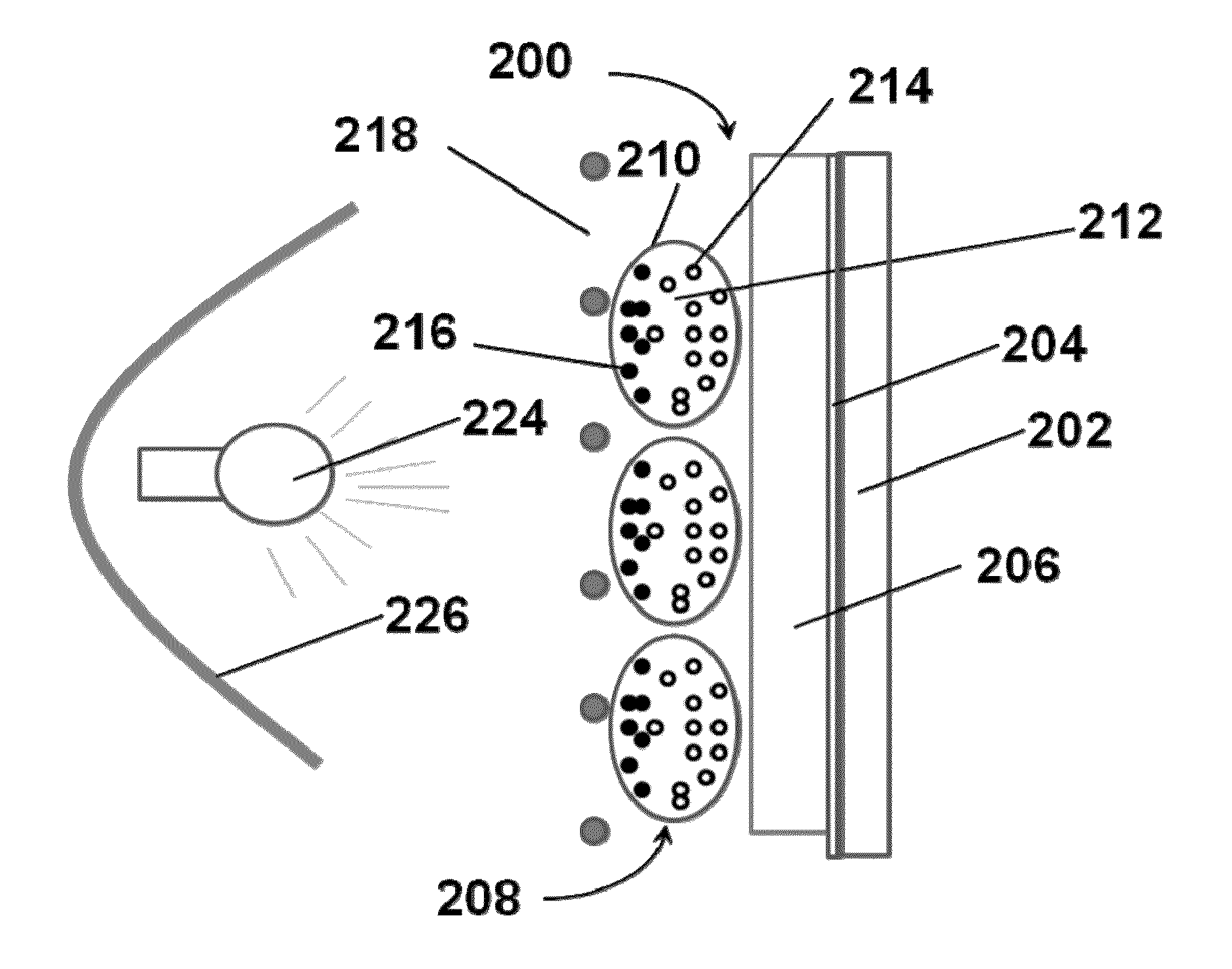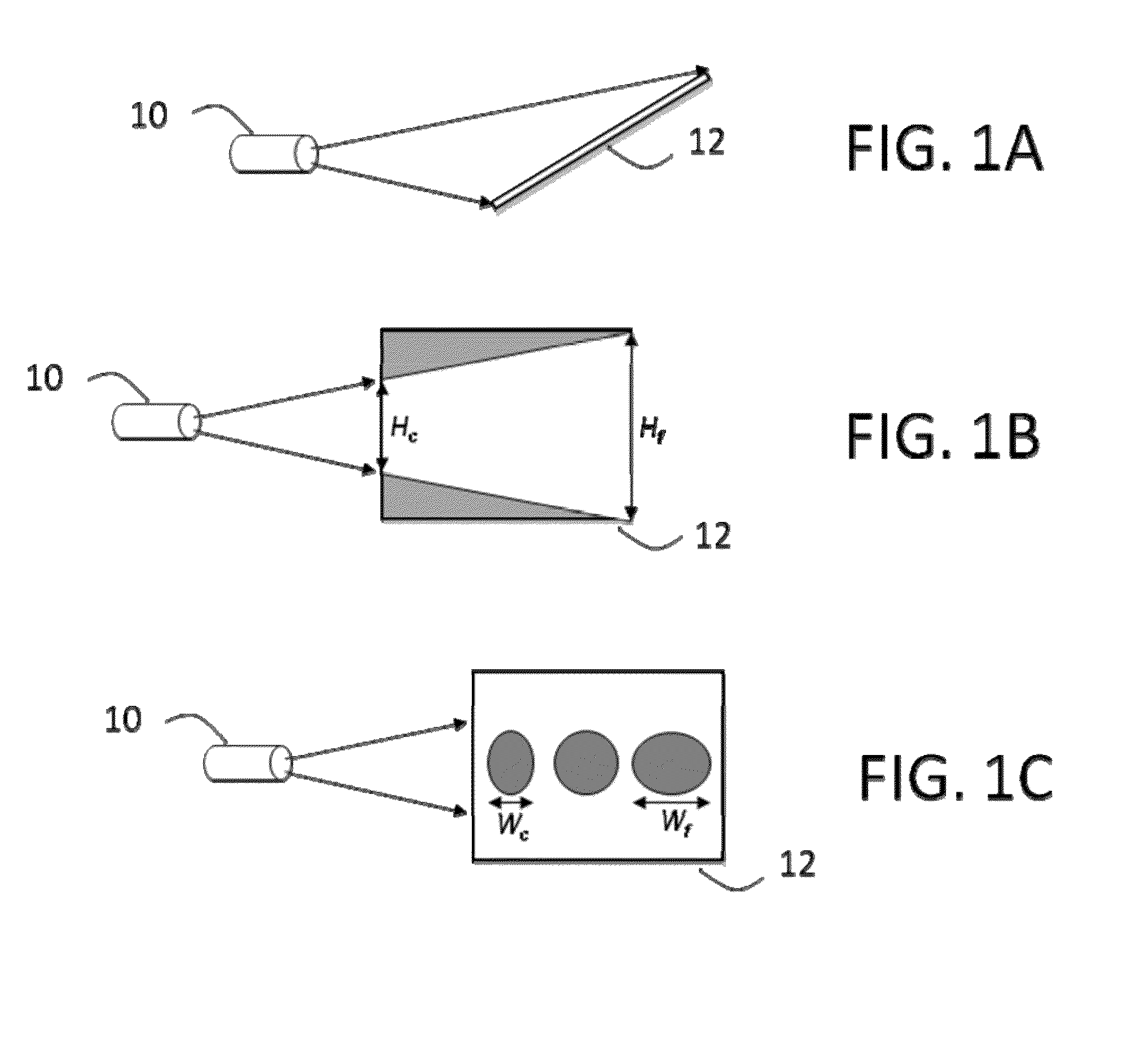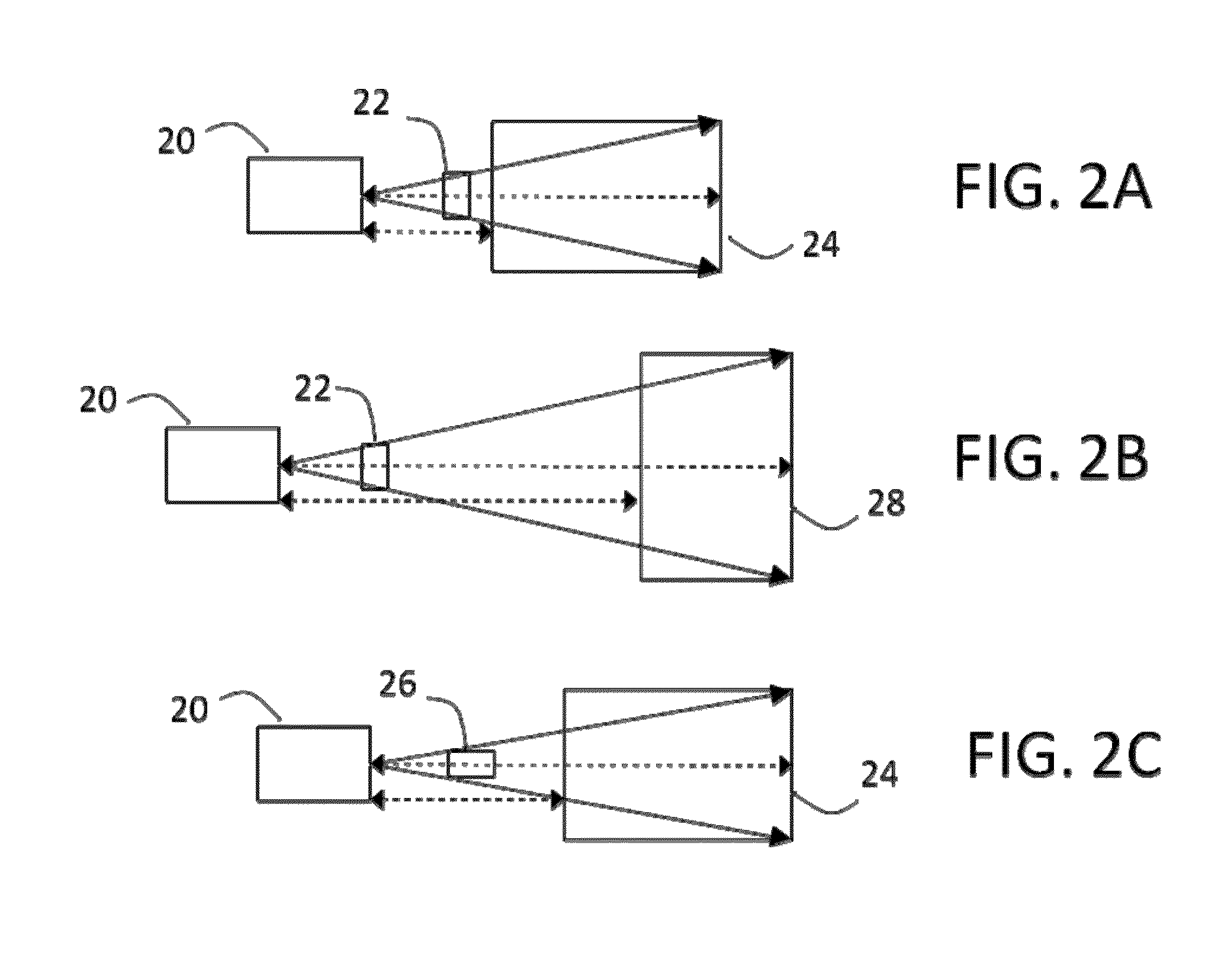Nevertheless, problems with the long-term
image quality of these displays have prevented their widespread usage.
For example, particles that make up electrophoretic displays tend to settle, resulting in inadequate service-life for these displays.
Such gas-based electrophoretic media appear to be susceptible to the same types of problems due to particle
settling as liquid-based electrophoretic media, when the media are used in an orientation which permits such
settling, for example in a sign where the medium is disposed in a
vertical plane.
Indeed, particle
settling appears to be a more serious problem in gas-based electrophoretic media than in liquid-based ones, since the lower
viscosity of gaseous suspending fluids as compared with liquid ones allows more rapid settling of the electrophoretic particles.
All emissive displays have the
disadvantage that their contrast and
colorfulness both depend upon the intensity of ambient light.
In very bright environments, such as
sunlight, the emitted light may be overwhelmed and the displayed information difficult to see.
However, reflective displays are obviously difficult to see in dim light.
A further difficulty arises with reflective displays intended to render
colored images.
Although a
color image is thus provided to the viewer, the color filters necessarily reduce the amount of light reflected from the display in the white state, and the necessary sharing of the available display surface area between the different color primaries limits
colorfulness and color
gamut.
Conversely, the legibility of information on a reflective display suffers under very low lighting conditions so that the illumination of the display must be increased accordingly to counter the loss of contrast and colorfulness.
However, no equivalent solution is currently known to increase the contrast and colorfulness of reflective displays.
Without rigid mechanical
coupling of
projector and screen the required exact alignment and registration are very difficult to achieve and maintain, and the solution described in the '486 patent, namely electronic
coupling between
projector and screen via ‘reflectance processor’ and ‘display controller’, is expensive.
The
system described in the '486 patent is a large-size emissive (projection) display, and the patent does not disclose any device in which color projection means image and means for rendering a reflective image are incorporated into the same device, such that both images can be rendered in registration with each other.
Both incandescent bulbs and LED's (and indeed, all other emissive light sources) require a continuous source of power, typically mains
alternating current power, so that any disruption of the power supply due to equipment failure, weather conditions or traffic accidents will result in failure of the traffic lights, traffic hazards and major disruption of
traffic flow.
Conventional traffic signals have other disadvantages, including:(a) false signals can occur as a result of sun light and solar glare; conventional traffic lights must overcome ambient light conditions, including specular reflections from various surfaces of the sign, which can make it difficult to discriminate between off and on states of a particular sign, to be noticeable and effective; even the common use of light baffles and high powered LED or incandescent lamps in the range of 25-100 W do not entirely overcome such problems;(b) traffic lights are located outdoors and hence are subject to harsh mechanical and environmental conditions; they must withstand mechanical damage and remain operational despite vandalism, mechanical shock and
impact, extreme temperatures, and
exposure to
ultraviolet radiation;(c)
total cost of ownership, particularly operating costs, is very important factor in traffic light usage; in New York city alone there are 11,871 traffic lights, and substantial effort is devoted to reducing
power usage, including converting incandescent signals to LED's;(d) strict weight restrictions exist for streetlights to prevent overloading of signage support structures, so
industrial design and weight allocations must be carefully managed for signage; and(e) the need (in some cases) for increasing
traffic signal size may compromise performance in terms of
power consumption, weight, and cost.
Similar problems are encountered when the “traffic control device” is an indicator on an automobile or other vehicle.
Even relatively high powered bulbs do not guarantee sufficient
visibility.
Although such a
parabolic reflector does help to concentrate the light from the
brake light into a
narrow beam, it also concentrates any light incident on the reflective
enclosure (for example, from
sunlight or light from the headlights of a following vehicle) back through the
colored plastic cover, thus creating background reflection that tends to obscure the state of the
brake light.
In the worst case, when the sun faces the back of the car, the
specular reflection of the parabolic reflective
enclosure, the reflection of the glossy paint on the car and the reflection from the rear windscreen combine to significantly lower the
visibility of the
brake light.
 Login to View More
Login to View More  Login to View More
Login to View More 


